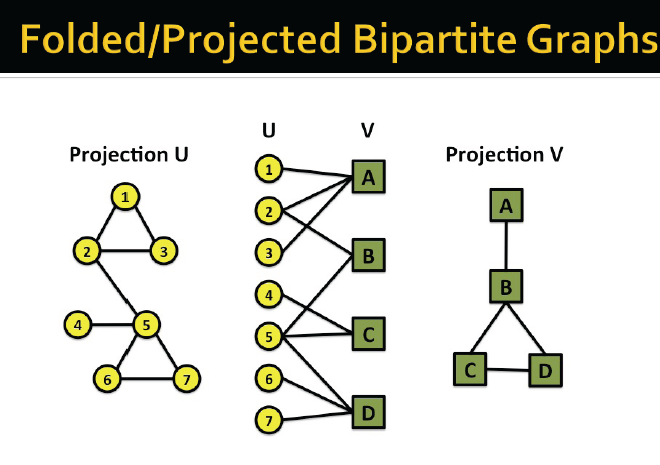网络结构:
对象: 节点,端点 (nodes, vertices) N
交互:链接,边 (links,edges) E
系统:网络,图,图谱 (network,graph) G(N,E)
Graph与Network的区别:
Network:真实存在的系统,如网络Web,社交网络social network,新陈代谢网络Metabolic network(常用词:network, node, link)
Graph: 网络的数学表示,如网络图谱Web graph,社交图谱 Social graph,知识图谱 Knowledge Graph (常用词:Graph, vertex, edge)
在课程中,会恰当的区分与使用该两个词,但是,大多数情况,将两个词看成是相等的
给每个网络系统选定恰当的词用以表示其实际意义
图的相关术语:
图分类:
无向图:如合作关系,好友关系
有向图:如打电话,twitter的follow
度:节点的边数
平均度:网络的平均度
有向图中区分出度与入度
完全图complete graph:任意两节点相连, 平均度为N-1
二分图Bipartite graph:设G=(V,E)是一个无向图,如果顶点V可分割为两个互不相交的子集(A,B),并且图中的每条边(i,j)所关联的两个顶点i和j分别属于这两个不同的顶点集(i in A,j in B),则称图G为一个二分图
例子:
作者——论文
演员——电影
观众/用户——电影 (观看或投票)
菜谱——材料
“folded” networks:作者合作网络,电影协助投票网络
图的表示:
邻接矩阵:有向,无向,稀疏性
set (v1,v2):更适用于大网络与稀疏网络,可快速查询节点的邻居
显示世界中的很多网络都是稀疏的
边的属性:
权重:如社交的频繁度
排序:如最好的朋友,第二好的朋友
类型:如朋友,亲戚,同事
标签:如信任/不信任,朋友/敌人
连通图:任意两节点间存在直接或间接的链路关系
Bridge edge: If we erase the edge, the graph becomes disconnected
Articulation node: If we erase the node, the graph becomes disconnected
强连接有向图:has a path from each node to every other node and vice versa
弱连接有向图:is connected if we disregard the edge directions
强连通分量Strongly connected components (SCCs) can be identified, but not every node is part of a
nontrivial strongly connected component.
